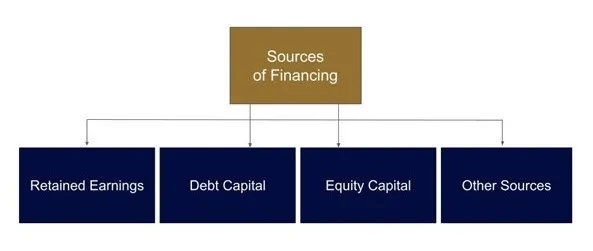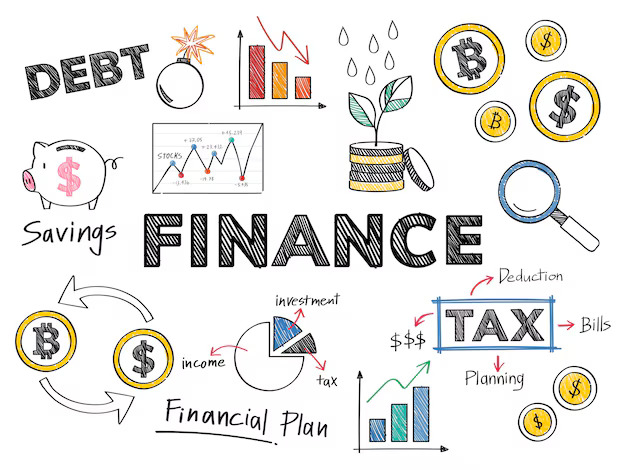Introduction to Finance Through Stories
So I will tell you two stories, and if you listen to these two stories intently and do a little bit of further research, you will be able to demystify a lot of things related to finance.
Hi, everyone. So today I have a very, very interesting video for you. The video is about finance.
Now finance, the word itself is very scary. And a lot of you have written to me that Hey Ajay, we don’t understand finance. Can you make a video on covering the basic terms of finance?
So I thought that I would shoot a video on this topic. This is a very, very interesting topic and I’m going to simplify it.

So I will tell you two stories. And if you listen to these two stories intently and do a little bit of further research, you will be able to demystify a lot of things related to finance.
So with that said, let’s get this video started.
Categories of Finance – Finance Made Easy
So essentially, finance can be categorized into a wide variety of domains, but for the purposes of our discussion, we are going to categorize it into two domains.
One is called corporate finance, and the second is called personal finance.
So I’m going to tell you one story each across these two domains.
Corporate Finance: Starting Your Own Venture
So let’s start with corporate finance first and let me start with the story. So the story, or the exercise is that let’s imagine that you’re starting your own venture.
Congratulations. You are an entrepreneur and you are starting your own venture. What is the first thing that you need?
You will say that, OK, we need an idea. And what are the things that you would need?
The second most important thing would be that, hey, I have an idea, but I need to develop my product. I need to set up my office or I need to hire my first employees.
So what do you need? You need money. That is the precise thing that you need and what are your options in terms of getting this money in the initial or inception stage of your venture?
Options to Raise Initial Capital – Finance Made Easy
So the first option is called FFF, which means friends, family and fools.
They are called as friends, family and fools because they don’t look at your idea, they just literally give you money.
For example, if you ask your friend that I have started a venture and we have been friends since childhood, would you want to give me like a thousand dollars so that I can start my product development?
Your friend will say, you know what? I don’t even want to hear the idea. I will just give you the money.
So its a foolish way of investing, but it’s a very heartfelt way of investing. So this is called as FFF or friends, family and fools way of financing. This is your number one option.
Bootstrapping Your Venture
What is your number two option? Number two is something called as bootstrapping.
Bootstrapping sounds very fancy, but bootstrapping literally means that essentially you have your own savings and you put that money into your venture.
For example, a majority of the startups that I have built, those have been bootstrapped.
We have not externally raised funds, not because we can’t, but at this stage we don’t want to.
And I’ll explain to you the reason why on point number three.
Equity Financing Explained
So the third way in which you can raise money is called equity financing.
This is where it starts getting a little bit tricky. So let me explain what equity financing means.
So imagine that this is your company. This is like hundred percent of your company.
And what you do is that you literally carve out a piece of this pie. So let’s imagine this is going to 25 percent of your company and then you sell it off to different investors.

Now, this could be your friends. This could be VC funds, this could be private equity funds, et cetera, et cetera.
But bottom line is that you lose a certain part of your company and in return, what you get? You get money.
Is that the only thing that you lose? That you’re losing 25 percent of your company? No, that’s not the only thing.
You also lose freedom. Freedom in the sense that, for example, when you’re bringing an external investor on board, then he or she would start giving you a lot of inputs.
You have to acknowledge that because they are your investors now. It can be both a good and a bad because many investors are very supportive. They get along with you really, really well.
So it’s a match made in heaven. But if you end up onboarding a bad investor, they can literally derail your entire company.
So it’s a risky proposition and that’s an equity way of raising money for your company.
Debt Financing and Its Implications
Finance Made Easy – Now, what is the next term? Next term is debt equity.
If there is an equity, there is always a debt and equity.
So debt means that let’s say that you have this entire company of yours. You say that I don’t want to sell any of my company.
Sounds very risky. I don’t want to bring external people. What can I do then?
The simple thing is that you go and take a loan. So loan is called as debt.
So you literally go with your company to a bank and then the bank gives you the loan.
That hey, here is 1 crore rupees for you, start your venture and you promised the bank that hey, I will start paying this amount of money from this month onwards.
So that is a debt way of financing your company.
for Finance Made Easy – So I explained you these four times very, very intuitively. So always ask a question that, hey, what is debt?
Imagine yourself starting a company and start implementing these concepts.
Now, of course, there are much more nuanced understanding to it, but we are keeping this video for beginners.
So I’m not going to get into more specific details here.
Expansion Stage and Seed Funding
So let’s move on to part 2. The second part of the story is that let’s imagine that you have to expand your company.
You started the company, you got the money, you poured in that money.
You developed the product. That product is doing well, but you need to literally reach millions and millions of people.
So you are in that expansion stage of your company. What are your options now?
for Finance Made Easy – So you would say that I’m looking for a seed round of funding. This is again a finance term that you should be aware of.
So seed round of funding means that, hey, it’s up to 2 million dollars.

Your product is doing well in the market and it’s making a little bit of money, but it’s not fostering organic growth.
Swiggy and Zomato started out, they were losing money. And up until last year, they were still losing money on every order that they used to deliver.
So what do they need to do? They still need millions and millions of dollars more.
So that part is called as seed money. So it is usually up to two million dollars.
And usually this is the first round of external VC investment that generally happens.
This is the time when equity investments come into the picture, if equity investments are made here, literally when you’re starting out.
This is usually done by whom? Angel investors, not VC investors.
Finance Made Easy – this is called as expansion stage. And here you usually get a VC fund up who pour in two million dollars or up to two million dollars usually in your company.
This is called as seed money because this is where the seed is planted for growth.
Series Funding and Unicorn Companies -Finance Made Easy
After this, as your company starts depicting more growth and starts getting more revenues and profits, you move to series funding.
Finance Made Easy- Now series funding, you might have heard of series A, series B, series C.
All it simply means that more and more VC funds come into your mix.
They start pouring in more money. Some time it’s the same VC, sometimes there are usually a combination of VCs who will pitch in with a lot of money.
So when you hear all these terms that a company has become a unicorn, essentially what is happening is that a lot of people are pouring money in that company.
for Finance Made Easy- It’s not as if that their balance sheets is that here are one billion dollars in your bank account. No, it doesn’t work that way.
So this is the difference between seed funding and series funding.
Massive Growth Stage: Bonds and IPOs
So now the company has expanded. Congratulations. Your business is doing wonderfully well.
Now, what you feel is that you know what, enough with the Indian market, I have already captured it.
for Finance Made Easy – Let me now go abroad and try to capture the world, become like the Roman emperor who wants to capture everything.
So what is that stage called as? This is called as massive stage growth.
And here firms usually execute two types of options.
One is called as issuing corporate bonds. And the second and the most exciting part is launching their own IPO.
So let me explain both very, very quickly.
for Finance Made Easy – So corporate bonds are what? This is a part of a debt financing.
Again, you’re not losing any control or part of your company. You’re just taking more loans.
for Finance Made Easy – But these are now issued in a structured way by the corporation because your company grew, it was a small player.

It became like a massive, massive player over time.
And then you get the power to issue bonds in the public market.
So you’re issuing bonds.
And these bonds are then analyzed by different credit rating agencies and they will analyze and give ratings to your bonds.
Then you can raise public money from that bonds or major corporations or other organizations can pour in money and give you loans.
So that’s a corporate bond type of a thing doesn’t sound super exciting because IPOs sound really exciting.
So let’s talk about IPOs. So IPOs are called initial public offering.
Why Companies Launch IPOs
Now, your first question would be, can they not just keep doing this and bring more and more VC investors and keep growing their company, making more money?
No. Because even investors, for example, when I invest in companies, even I would need an exit to make money from the investments that I have made.
for Finance Made Easy – So the majority of the times, and this is a controversial statement, that majority of the times when IPOs are launched, especially for loss making companies, it’s done with the intent of giving VC investors an exit so that term is called as exit.
So that is one of the primary reasons why IPOs are launched.
Finance Made Easy – Another reason why an IPO is launched is to build the brand and get visibility for the firm.
Now, this can be very easily explained if I ask you a simple question.
So would you go and work with Facebook or would you go and work at a very high growth startup that you haven’t heard of?
Finance Made Easy – You most likely are going to work with Facebook because Facebook is a listed company. You keep reading about it.
There is so much scrutiny and Facebook has that brand. So you have this massive brand going for you.
It becomes easy for you to recruit better talent.
So these are two primary reasons why IPOs are launched.
Conclusion and Upcoming Personal Finance Story
Now, of course, I can make a separate video on IPO altogether. But this was a basic video. – Finance Made Easy
So I hope that you learnt a lot from this corporate story.
On the next part of this video, I’m going to tell you a personal finance story which will help you understand the basics about personal finance and I will release that video tomorrow.
Let me know if you’d like me to format it further or help with anything else!
